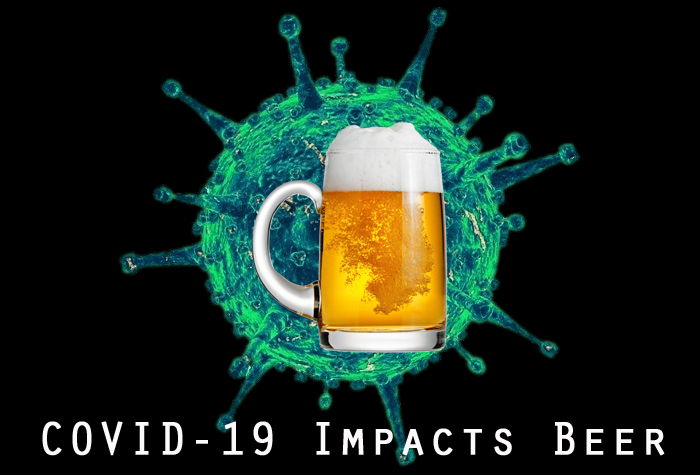COVID-19 Impact to Beer with Julia Herz is part 2 of 2 articles featuring a Profiles in Craft Beer interview with Julia Herz. Part 1 provides insight into Julia’s background, job and activities. If you haven’t yet read part 1, do so by clicking here.

As the Craft Beer Program Director at the Brewers Association, a not-for-profit trade organization that protects and promotes small and independent U.S. brewers, Julia Herz passionately leads promoting and protecting small and independent craft brewers, their beers and the community of brewing enthusiasts. In her role, Julia is one of the independent craft beer industry’s most visible and prominent representatives.
The COVID-19 pandemic greatly impacted breweries throughout the world and continues to do so. The majority of the more than 8,000 breweries in the United States are small and independent. The business of these breweries was hit hard.
The severe impact to the craft beer industry begs many questions, including: How badly have craft breweries been impacted? How have breweries adapted? What is being done to help the craft beer industry? And what’s the way forward for post-pandemic recovery?
Julia Herz discussed with me the impacts of the COVID-19 pandemic to the craft brewing industry. In addition, we discussed how the industry has adapted and what the Brewers Association has done and is doing to help. Finally, we talked about the way forward for industry recovery.
The Brewers Association has been conducting a series of impact assessment surveys with craft brewers. Just prior to my interview with Julia, the Brewers Association released the results of the third survey.
COVID-19 Impact to Small and Independent Craft Brewing
Tap room sales are responsible for the majority of income for small craft breweries. But almost everywhere, taprooms for these smaller breweries had been shuttered.
In fact, an initial impact survey conducted by the Brewers Association in late March, with 938 U.S. small and independent craft breweries responding, showed more than 90 percent of respondents saw a major decline in onsite sales. And at the time, 87 percent had closed their taprooms or brewpubs. The result included drastic employee furloughs and layoffs.
The Brewers Association conducted a second impact poll in early April. Julia remarked, “The 2nd impact poll, that we published in April, gave us data that was very sobering and extremely concerning. Of more than 500 breweries that responded to our poll, 46% indicated that they didn’t think they could survive for 1-3 months.”
In short, the information suggested that thousands of small craft breweries were at risk of closing. Julia elaborated, “Most craft brewers, more than 90%, make less than 7,500 barrels per year. And they depend on tap room business as their primary income. That’s pint to glass from the keg. And for those lucky enough to also be carried down the street at restaurants, bars, etc., those businesses were closed too and not ordering kegs.”
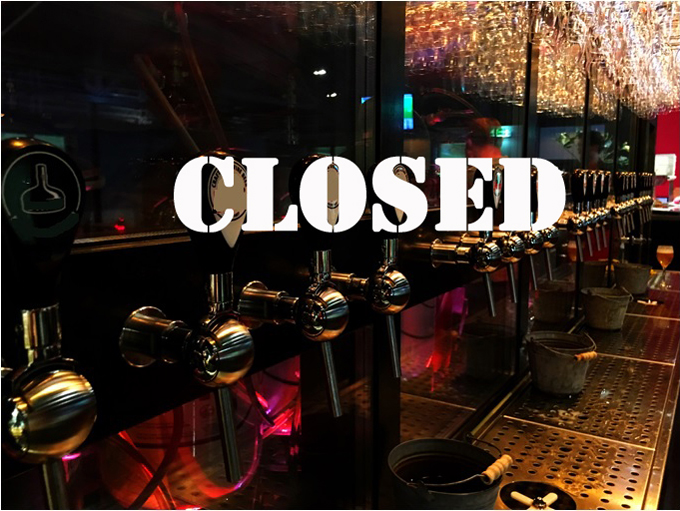 Throughout the U.S., small and independent craft brewery taprooms closed indefinitely.
Throughout the U.S., small and independent craft brewery taprooms closed indefinitely.
However, craft breweries adapted. In late May, the Brewers Association published the results of their third impact assessment survey. The data showed improved optimism but challenges remained.
Julia explained, “Draft is not the only answer. Craft brewers set up to-go sales. All were excited to be able to sell Growlers. Many went into Crowlers that weren’t previously doing so. Many of the craft brewers switched over to canning during this pandemic that were not previously canning…..The to go sales, for example, from the breweries that replied said that 86% previously had to go sales and now 94% have to go sales…..The changes in the breweries that were allowed to reopen have been significant enough to keep their doors open but not significant enough to recapture all sales. Because most breweries are either brewpubs or tap rooms, depending on people visiting their establishment – not just for to go beer.”
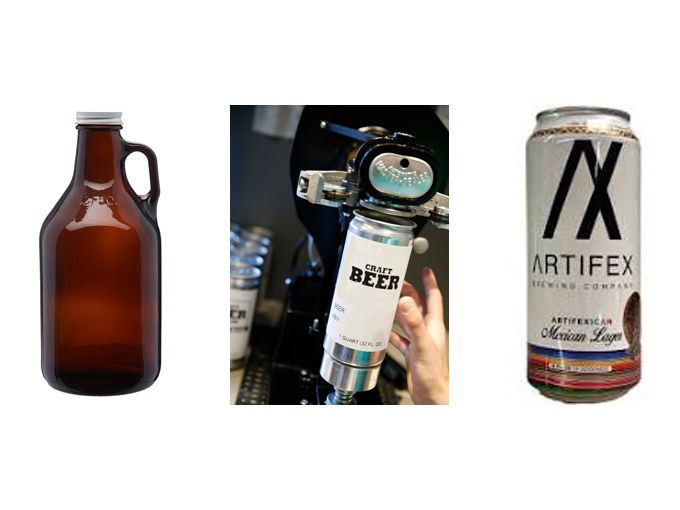 To-go sales helped craft breweries stay in business but they needed more.
To-go sales helped craft breweries stay in business but they needed more.
So many craft breweries continued to adapt and added online sales and delivery service. Julia added, “Deliveries increased 38.5%. Deliveries by brewery is a big change to their sales approach and results. In fact, it was the biggest statistic increase we saw. If you combine delivery by brewery or delivery by 3rd party (like a DRIZLY or a Tavour) that number increases even a little more. Looking at the pivots to the business model that the breweries did, they didn’t just pivot to delivery and online sales but they also set up the infrastructure to do that in a very quick fashion. That was pretty impressive to me in what we saw happen.”
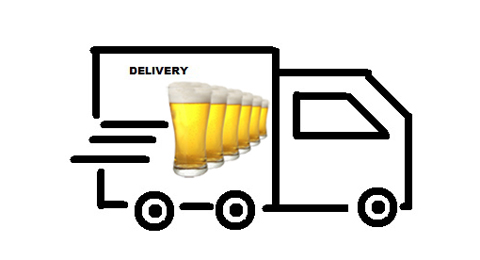 Craft breweries increased deliveries by 38.5% – the biggest increase in their sales approach.
Craft breweries increased deliveries by 38.5% – the biggest increase in their sales approach.
Nevertheless, although rapid, these changes to address COVID-19 impacts did take time to implement as well as resonate with consumers. The Paycheck Protection Program (PPP) significantly helped this transition. Julia said, “Many craft breweries, more than 80%, received PPP loans. That was truly a lift and big help.”
Moreover, craft breweries indicated increased optimism because states began to reopen. In most states, brewery and restaurant re-openings are occurring in the same time frame. In re-opening states, 55.7% of breweries eligible to reopen indicated they had at least partially reopened their brewery. Another 24% indicated plans to reopen soon.
However, Julia added: “But the story’s still ongoing. There’s a lot of learning and more to assess as time goes on without making predictions or assumptions right away…..These changes may not be long term. Different states will allow different things. Certainly brewers have interest in having access to direct market sales. It’s reasonable to expect that the topic of changes and their permanence will be a hot topic in every state, especially in state brewer guilds.”
Brewers Association Support to Craft Beer Industry
Throughout the COVID-19 pandemic, the Brewers Association took rapid and robust actions to support the craft beer industry. And they continue to do so.
Some of these actions include:
- Support Your Local Brewery Campaign
- Support Your Local Homebrew Shop Campaign
- Believe in Beer Craft Brewery Relief Fund in Collaboration with Bottleshare
- Creating and maintaining the free COVID-19 Resource Center
- Conducting surveys to help identify craft beer industry status and needs.
- Lobbying lawmakers for industry relief and support.
- Creating general awareness, educating the public and encouraging support.
Julia said, “It’s been a robust set and a quickly moving one…..”. She spoke to some of the above actions and more.
COVID-19 Resource Center:
“We’ve done simple things like create a COVID-19 Resource Center open to everyone for free at the moment. You don’t have to be a member of the Brewers Association to use it right now…..”
Craft Brewers Conference:
“We changed the Craft Brewers Conference model. Instead of having the normal conference in April, we turned the event into an online conference. The online conference provided open attendance. Content was open to all. More than the people that would have normally attended the conference collectively listened to 5 weeks of seminars. And we held multiple seminars each week.”
Carbon Dioxide Supply:
“We are still engaged in representation on CO2 shortages. CO2 is a state by state supply and demand difference, meaning there are different challenges in different states and not a challenge in all states. We get the majority of CO2 from the production of ethanol. And since driving drastically reduced due to COVID-19, plants that were getting the demand for ethanol gasoline additive stopped producing. So there’s a lot less CO2 availability. This lack impacts a large group of businesses including food packaging, beverages that use CO2 like sodas, hospitality, beer and more. We are getting together with a caucus of like-minded organizations/businesses and continuing to advocate for CO2.”
Federal Excise Tax:
“Federal excise tax is a big issue. Right now we are in an extended year where the excise tax is under a relief phase for 2020. Small breweries, less than 60K barrels of beer per year, pay $7 normally per barrel. For 2 years prior to 2020 we had relief and then we got it extended again for 2020 to bring it to ½ (half) – $3.50 per barrel. We are asking for full forgiveness of excise tax in these crazy times, as well as, permanent relief…..”
Great American Beer Festival (GABF):
“We’re super excited to still have the GABF in 2020 and serve the beer loving public. GABF is normally a 62,000 person event. We will announce on August 1st the way that you can have an immersive experience. We’ll also be doing the competition….. We are really keeping it a little more close to our vest right now since we are still navigating the final details. But on August 1 we will be announcing how tickets will be available and the event will in some form or some way be about beer.”
 GABF moved to October 16-17 for 2020. The event will be an online immersive experience.
GABF moved to October 16-17 for 2020. The event will be an online immersive experience.
COVID-19 Impact to the Brewers Association
The COVID-19 pandemic has impacted the entire craft beer industry, including the Brewers Association itself. So I asked Julia about the current impacts to the Brewers Association.
Julia responded, “Very savvy question, because you can’t assume that anyone is immune. We have had dramatic budget cuts because of events that we were no longer able to host in a format that resulted in fees like the Craft Brewers Conference; Savor: An American Craft Beer and Food Experience); as well as the World Beer Cup. We had dramatic budget cuts and were forced into the hard decision of cutting our workforce by 23%. So in the history of an organization that is a very dramatic moment in time and we continue to have to shift our thinking and be nimble on how we can best serve members. And what we will be doing tomorrow isn’t necessarily what we were doing pre-March because of the disruption to the whole beverage and hospitality industry.”
How Consumers Can Help Their Local Breweries
Beer lovers and consumers have an interest and obligation to help their favorite local breweries. So I asked Julia her thoughts on ways that consumers can help their local breweries.
Julia replied, “I think it’s somewhat of an obvious and easy answer but it’s important to restate. Beer lovers should continue to support the independent craft brewers at their place of production or where they can find their beer in a restaurant, bar or store. That’s the easy answer.”
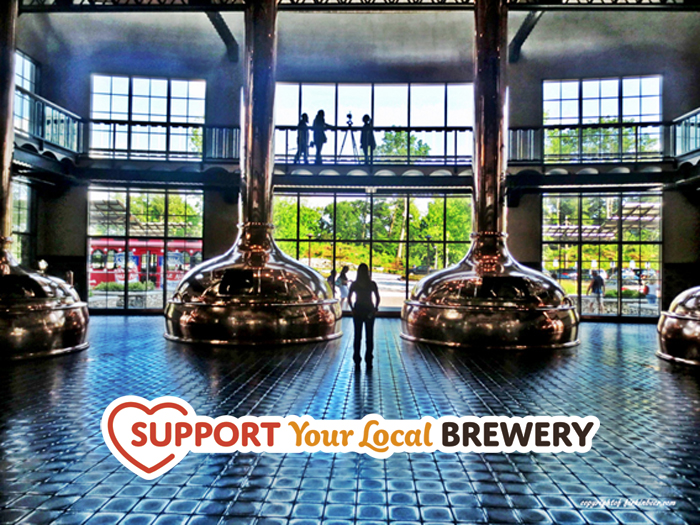 Beer lovers should continue to support the independent craft brewers at their place of production or wherever they can find their beer.
Beer lovers should continue to support the independent craft brewers at their place of production or wherever they can find their beer.
She added, “CraftBeer.com has a to-go database still available from more than 1000 breweries that have provided us information on how they are selling their beer. So buy direct and buy at retailers that support your local craft brewery.”
When buying from stores, Julia recommended: “Continue to have craft beer as part of your diet and make sure that you are supporting not just what’s convenient and in front of you in the store. Instead look for the harder to find independent brands. They are not always at the eye-level placements in the store.”
Buying merchandise and gifts provides another important mechanism for supporting your local craft brewery. T-shirts, hats, beanies, bottle openers, etc. all provide income to the brewery. Gift cards provide an excellent means of support.
Julia also pointed to the recently finished American Craft Beer Week. Sponsored annually, this year’s event encouraged craft beer lovers to gift craft beer to others and to promote craft beer giving on social media (Twitter and Instagram) with the #GiveCraftBeer hashtag. Julia provided this example, “City Star Brewing, which is a town over from me, has a pay-it-forward program. So I ordered on-line and went over to pick up my beer. They had yellow stickies all over the front of the brewery windows and that was all $6 beers that people had bought each other. Great way to add-on to what you are buying from the brewery and also make somebody else’s day.”

I think Julia would agree with me that we should make every week American Craft Beer Week and #GiveCraftBeer.
The Way Forward
The way forward for the small and independent craft beer industry is still fraught with uncertainty, anxiety and challenges. The latest Brewers Association impact survey shows a wide variation in how brewers view the market right now.
As pointed out by Brewers Association Economist Bart Watson, “Sales are down for most brewers, with half seeing their sales down 50% or more. Faced with these challenges, brewers have pivoted their models, applied for PPP loans, and cut costs as able. These new sales channels and government support have helped to turn their attitudes in a somewhat more positive direction, but it is understandably a mixed picture.”
As states have begun to reopen, the reemergence of the craft beer industry offers hope coupled with potential pitfalls. Julia Herz’s advice should resonate clearly to craft beer lovers: “Continue to have craft beer as part of your diet and make sure that you are supporting not just what’s convenient and in front of you…Beer lovers should continue to support the independent craft brewers at their place of production or where they can find their beer in a restaurant, bar or store.”
I hope that once the pandemic is over that the small and independent craft beer industry will be remembered for its recovery success stories and not its failures.
A big THANK YOU to Julia Herz for the interview. Read some of her insightful articles by clicking here.
